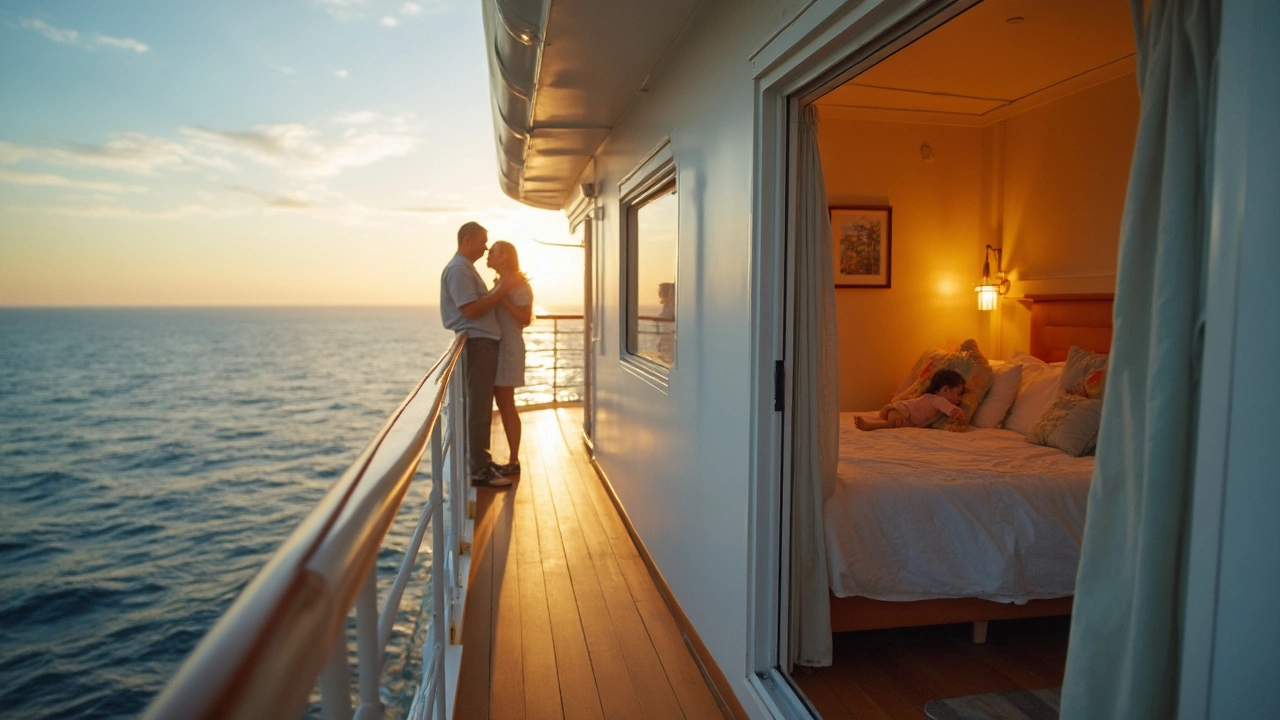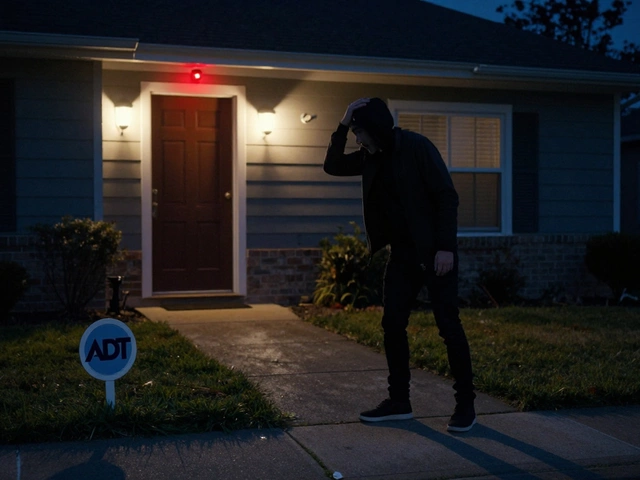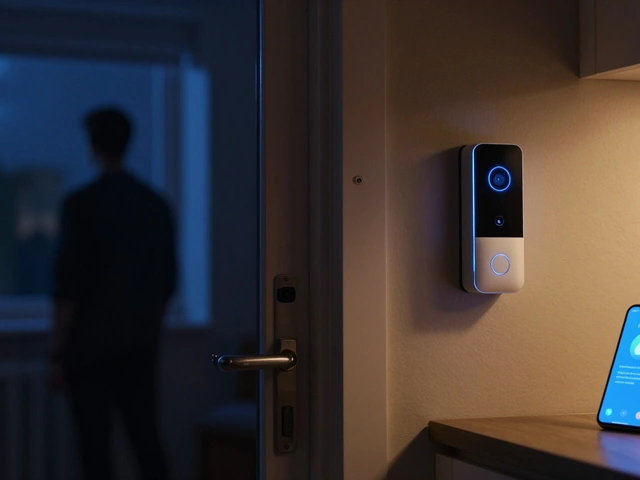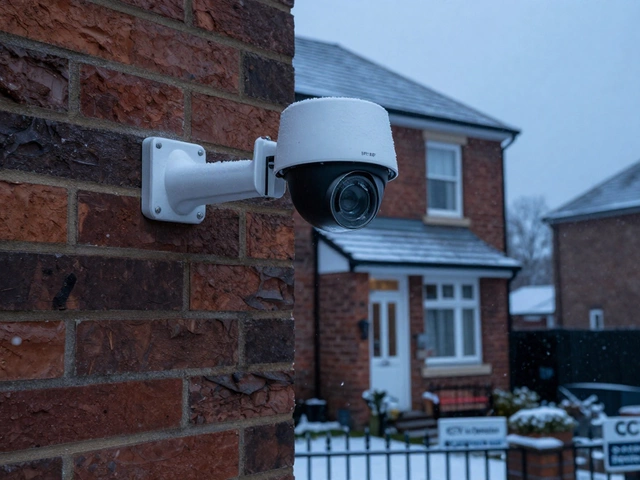If you’ve ever packed for a cruise with your little one in tow, you might have done a double-take when you saw that baby monitors are on the banned item list. It’s not a random rule—there’s good reason behind it and it might surprise you.
Cruise ships have their own complicated electric systems and strict security rules. Even small, everyday gadgets like a baby monitor can mess with those setups or cause safety headaches for the crew. Bringing one along seems harmless—until you dig into the details that cruise lines deal with every day.
Plus, even if you sneak a monitor in your carry-on, they probably won’t work well at sea. Between thick metal walls and weird Wi-Fi rules, signals rarely get through. That means even the best-rated baby monitors in your online basket aren’t going to save the day on a cruise. The question isn’t just ‘why can’t you bring one?’ but ‘what can you do instead?’
- What Cruise Lines Say About Baby Monitors
- The Real Safety Risks on Ship
- Alternatives for Checking on Your Kid
- Smart Tips for Traveling Parents
What Cruise Lines Say About Baby Monitors
Most cruise ship rules are pretty strict about what goes inside your suitcase, and baby monitors make the banned list more often than people expect. The big cruise lines—like Royal Caribbean, Carnival, Norwegian, and Disney—usually mention baby monitors in their official lists of prohibited items. Some don’t spell it out, but if you dig through forums or ask ahead, staff will tell you the same thing: don't bring them.
The main reason? It’s about electrical and fire safety. Cruise ships use high-powered marine-grade electrical systems, and plugging in random gadgets—including baby monitors—can cause short circuits or even overheat. Norwegian Cruise Line and Carnival both note that only ship-approved electronics are okay to use, and most personal monitors don’t make the cut. For example, Norwegian’s guest FAQ specifically marks monitors as forbidden due to “potential interference and fire risk.”
Another issue is radio frequency interference. Most monitors use radio waves or Wi-Fi. Now imagine thousands of guests, each with different gadgets—the risk of messing with ship communications or safety systems isn’t something cruise lines are willing to take. Disney Cruise Line warns that personal wireless devices might not work at all due to their on-board network setup, but they mostly just ask you not to bring them because they might interfere.
If you’re wondering how often these things really come up, a 2023 poll on a family cruising forum found that about 60% of first-time parents didn’t realize monitors were banned until right before sailing. That makes it a common surprise at check-in. Some lines will confiscate them and hand them back at the end of the trip—while others just tell you not to use them at all.
It all boils down to this: cruise companies don’t want to risk child safety at sea with gear they haven’t tested themselves. Their official stance is better safe than sorry—so don’t count on powering up your monitor, even if you bring it.
The Real Safety Risks on Ship
It might look harmless, but a baby monitor can bring some serious safety headaches to a cruise ship. The first big reason cruise lines ban them? Electrical safety. Cruise ships run on complex power systems that are different from what you use at home. If everyone plugged in their own gadgets and chargers, things could overload—especially when those gadgets aren’t tested for marine standards. Some baby monitors have been known to overheat or cause short circuits, which is the last thing you want in the middle of the ocean.
Another problem is interference. Baby monitors run on radio frequencies or Wi-Fi, and cruise ships use similar frequencies for their bridge equipment, emergency radios, and even ship-wide PA systems. If your monitor messes with a signal, that could set off alarms or block crew communication. In fact, one cruise safety report mentioned that even a weak monitor signal once caused static during emergency drills—not the kind of background noise you want during actual emergencies.
There’s also the privacy side. Wireless baby monitors can be picked up by other devices, sometimes even someone else’s phone or laptop. On a crowded ship with people from all over the world, you can’t control who’s tuning in. Nobody wants a stranger picking up their nursery audio.
- Electrical outlet safety is stricter on ships than at home. Ships often have fireproof outlets and will confiscate gear with questionable plugs or adapters.
- All electronics onboard must meet international marine safety standards—and almost no home-use baby monitors do.
- Some baby monitors have lithium-ion batteries, which are limited or banned on ships because of fire risks.
The bottom line? These cruise ship rules aren’t just about being picky. It’s all about reducing fire danger, keeping critical ship communications clear, and protecting your privacy.
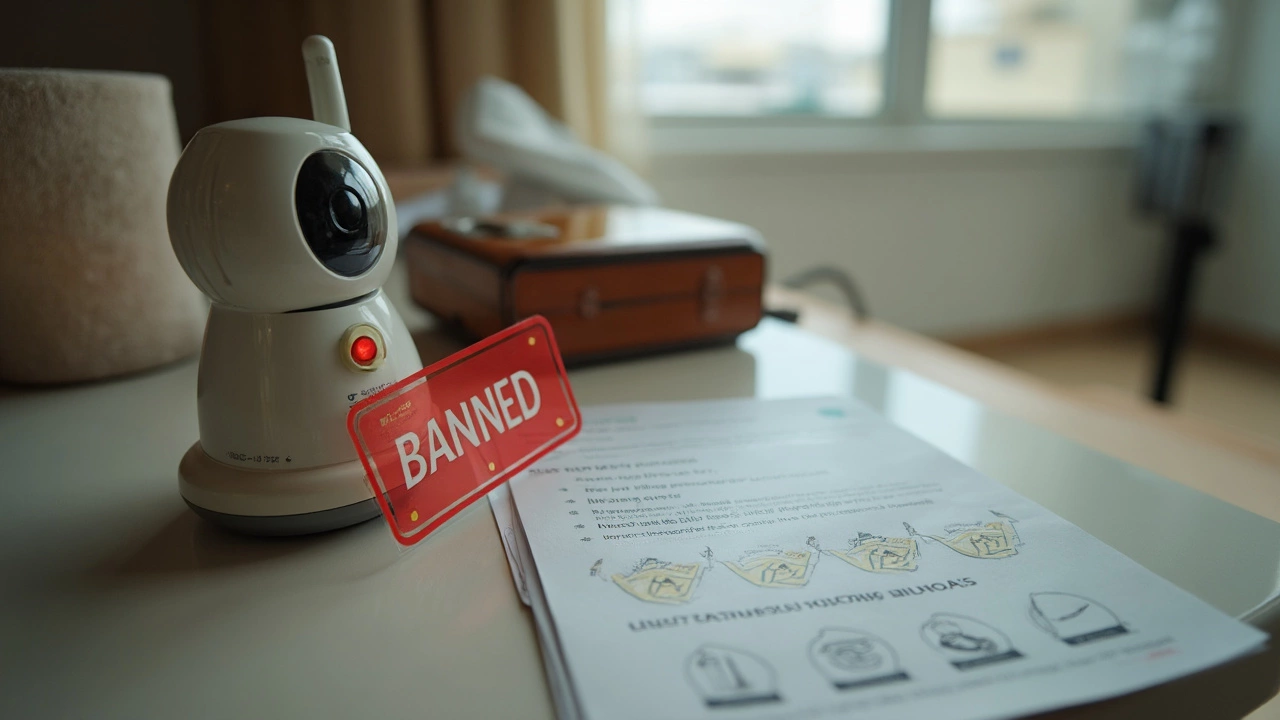
Alternatives for Checking on Your Kid
So you can’t pack your baby monitor—what now? Parents still want peace of mind while cruising. Good news: cruise lines know families travel together and have workarounds to help you keep your child safe.
First, most ships have stateroom walls that block any wireless signals, even if monitors were allowed. Instead, there are other ways to keep tabs on your little one. Here are some realistic options:
- Use the ship’s baby-sitting services. Most bigger cruise lines offer supervised playrooms for babies and toddlers. These are run by trained staff, usually with strict check-in and check-out procedures, so you’ll know your child is safe.
- Request a connecting or adjacent cabin. If family or friends are traveling with you, booking next to each other means you can take turns checking in and listening for your child without needing any tech at all.
- Stick close to your stateroom. Sounds obvious, but keeping your evening activities to places near your cabin means you can pop back and quietly check on your child. Some parents will do dinner in shifts to make this work.
- Stay in rooms with a balcony or suite layout. Many modern ships offer cabins where parents can relax on a balcony or in a split suite without leaving the sleeping child alone in another room.
- Walkie-talkies (if allowed by your cruise line). Not all cruise lines allow these because they can still interfere with ship equipment, but on lines where they’re okay, some families use basic walkie-talkies for room-to-room communication with adults.
Homegrown hacks don’t cut it, either. Trying to repurpose gadgets, like putting your phone on a video call to the cabin, usually fails. Wi-Fi on ships can be patchy and expensive, and many lines block this kind of streaming for safety and bandwidth reasons. Even before you set sail, cruise lines warn against using electronics to "babysit" kids.
| Alternative | Available on Most Ships? | Pros | Cons |
|---|---|---|---|
| Ship Babysitting | Yes | Trained staff, safe environment | Costs extra, limited hours |
| Connecting Cabins | Yes (if booked early) | Direct family access | May be more expensive |
| Walkie-talkies | Sometimes | Simple to use | Possible tech issues, not always allowed |
One thing you can always do: talk to your cruise’s customer service before your trip. Ask about their child safety policies and what parents on board usually do. Some parents say it’s about adjusting your routine for a few days—maybe not as much grown-up time, but at least you know your little one is safe.
Smart Tips for Traveling Parents
Bringing a baby monitor on board might sound like a good idea, but when cruise rules say "no," you need backup plans. Luckily, you’ve got some solid options. Keeping your child safe and staying connected doesn’t have to be complicated, even at sea.
Here’s what actually works for parents on a cruise:
- Book a cabin layout that makes sense. Connecting rooms or a balcony cabin helps you keep tabs on your kid without relying on electronics that could get taken away at the security check. Some family suites are designed with young kids in mind, putting beds nearby or in view.
- Use the ship’s childcare or babysitting services. Most big-name cruise lines like Royal Caribbean, Disney, and Carnival have supervised play areas or evening group babysitting programs for little ones. Trained staff and secure check-in/check-out systems give you peace of mind.
- Make friends with your cabin attendant. Seriously, these folks see everything. If you’ve got nap schedules or routines, give them a heads up—they’ll often help keep an eye out and help you avoid cleaning disruptions.
- Check out cruise line apps. Some ships use their own communication apps. While not a replacement for a baby monitor, these can help you send texts to family or friends onboard if you split up to take turns on baby duty.
- Stick to your regular routines if possible. Kids feel better with familiar nap or bedtime schedules, and it’s easier for you to check on them if you stay consistent every day.
If you’re worried about hearing your child in a strange room, pick a cabin that’s not too close to noisy areas—no clubs, casinos, or elevators right outside your door.
Here’s a look at some parent-approved alternatives to monitors and babysitting for cruise families:
| Tip | Why It Works |
|---|---|
| Leave the bathroom door slightly open | Sound travels better, so you’re more likely to hear if your child wakes up. |
| Use a white noise app | Drowns out ship hallway noise, helping kids sleep longer (and lighter sleepers, too). |
| Set check-in alarms on your phone | Reminds you to check on your kid if you’re just down the hall. |
| Leave a note for traveling companions | Keeps everyone on the same page and helps avoid miscommunication when swapping babysitting shifts. |
Banned baby monitor or not, cruising with a little one isn’t impossible. Plan ahead, use the ship’s services, and keep your routines. That’s the way seasoned travel parents manage the waves—no electronics required.

